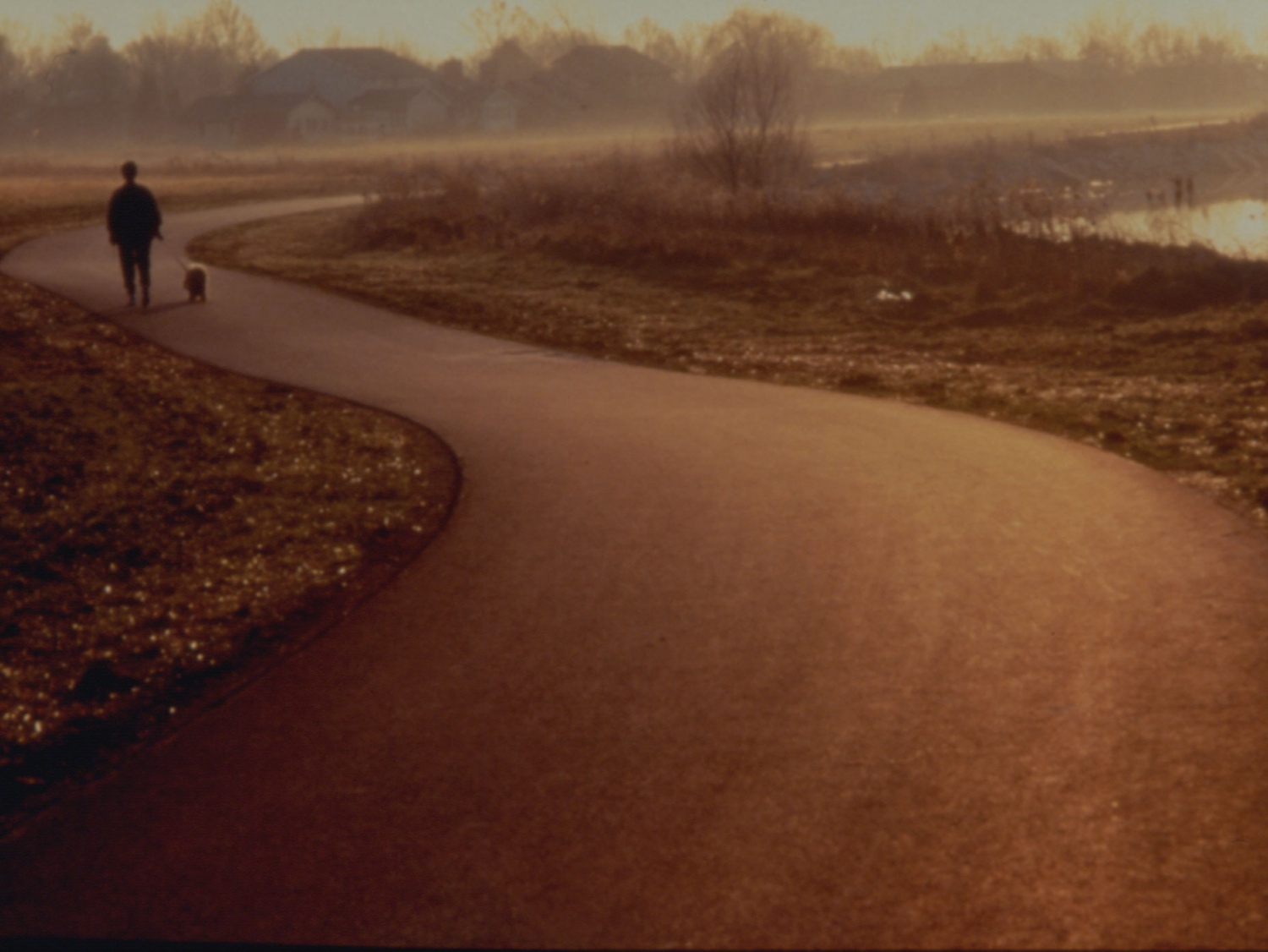Biking the Amana Colonies
By Taylor on June 30, 2015 in Blog

The Kolonieweg trail running through Amana means “Colony Way.” (Photo by Eric Utterback)
Looking for somewhere new to explore on two wheels this holiday weekend? Check out the new gravel bike routes in the Amana Colonies! The two new routes allow riders to immerse themselves in the histories of Middle, High and West Amana.
The fairly easy 7-mile Route A begins in Middle Amana at the entrance to the Amana Colonies Golf Course and takes you on a scenic gravel route through native hardwood timberland to High Amana, which features the historic High Amana General Store and the Amana Art's Guild.
The more challenging and 17-mile Route B also starts in Middle Amana at the entrance to the golf course but takes you to West Amana, which has Iowa's Largest Walnut Rocking Chair, the Basket and Broom Shop, Opa's Tractor Museum, Michele Maring Miller Studio and Gallery and the inspirational landscape for American painter Grant Wood’s famous Young Corn.
Kolonieweg Trail
And while you’re in the Amana Colonies, check out the Kolonieweg, a 3.2 mile asphalt trail connecting Amana and Middle Amana and circling Lily Lake. The trail offers views of Amana waterways, the lake, colony farmland and a multitude of wildlife.
The Amana Colonies
From the colonies’ website:
The Amana Colonies are a group of settlements of German Pietists in Iowa, comprising seven villages. Calling themselves the Ebenezer Society or the Community of True Inspiration, die Gemeinde der wahren Inspiration, they first settled in New York state near Buffalo in what is now the Town of West Seneca. However, in order to live out their beliefs in more isolated surroundings they moved west to the rich soil of east-central Iowa (near present-day Iowa City) in 1855. They lived a communal life until the mid 1930s.
A striking feature of the Amana Colonies is that for eighty years they maintained an almost completely self-sufficient local economy, importing very little from the wider, industrializing U.S. economy. The Amanians were able to achieve this independence and life style by adhering to the specialized handcrafts and farming occupations which they had brought with them from Germany.
Today, Amana is a major tourist attraction known mainly for its restaurants and craft shops. Included in the shops are woodworking shops, wine shops, and even a brewery called Millstream. The colonies as a whole have been listed as a National Historic Landmark since 1965.
If gravel isn’t your thing, check out the free Iowa By Trail app, developed by INHF, to help you discover 1,800+ miles of Iowa trails.
